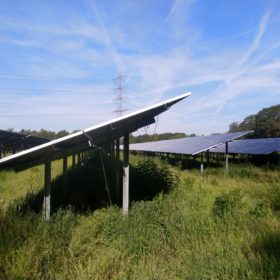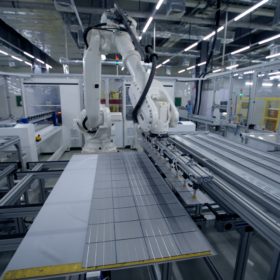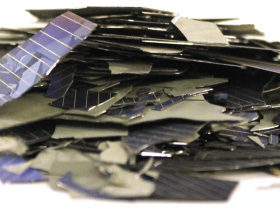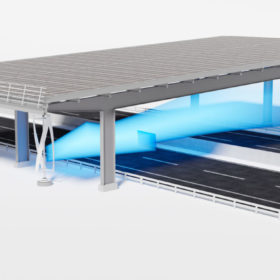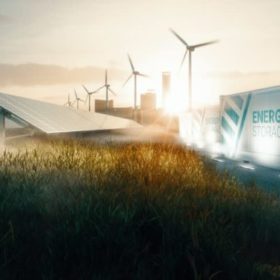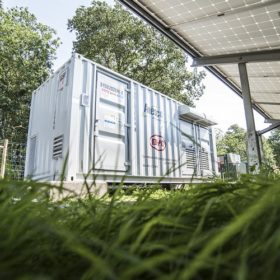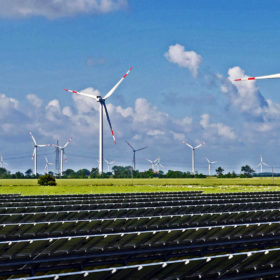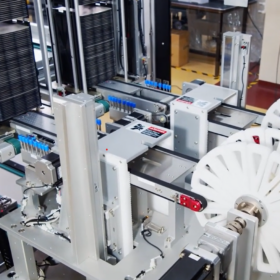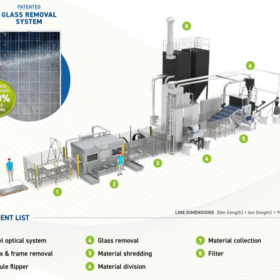Minimum solar panel row distance crucial for good soil, vegetation conditions, in solar parks
A Dutch research group has shown that south-oriented solar parks offer better environmental conditions for soil and vegetation than east-west oriented facilities. According to their findings, a distance between panel rows of at least 1.5 times panel height is crucial to favor ideal plant growth and soil functioning.
Coal India Limited seeks equity partners for its 4 GW solar fab
The state-owned coal miner has invited proposals from parties willing to partner on its proposed 4 GW solar PV ingot-wafer-cell-module manufacturing facility. Applications can be submitted until September 16.
A new spin on battery manufacturing
Scientists in Germany developed a new process for manufacturing battery electrodes, that they say could be both more cost effective and environmentally friendly compared to current technologies. The technique could be applied to a range of different battery materials/chemistries and its creators say they are in discussion with a number of battery cell manufacturers regarding pilot production.
New solar addition may generate 21 kilotonnes of PV module waste by 2030
India’s solar capacity growth up to 2030 also means the generation of a significant mass of PV module waste due to early failures or damages during transportation, installation, and operation. The waste generation could be 21 kilotonnes assuming India’s cumulative installed PV capacity grows to 287.4 GW by 2030 from 40 GW in 2020. This doesn’t include end-of-life panel waste as PV systems installed between 2020-30 are assumed to have at least 30 years of lifetime.
Hybrid wind-solar for highways
Switzerland-based Energy Pier has developed a new concept for hybrid-wind solar projects located along highways. The proposed solution combines a rooftop PV system with small scale wind generators that are installed on both sides of the supporting pillars of the system.
Ayana Renewable partners Norway’s Greenstat on India’s hydrogen mission
The Bengaluru-based solar and wind energy developer has signed a Memorandum of Understanding with Greenstat Hydrogen India to collaborate on developing projects for green hydrogen production in India.
GSECL tenders EPC work for 35 MW/57 MWh solar-plus-storage
Bidders have until September 29 to lodge their interest to set up the solar-plus-storage system at Gujarat State Electricity Corporation Limited’ Kutch Lignite Thermal Power Station in the Kutch district of Gujarat.
Flexible solar panel for vehicle-integrated applications
Called SolFlex, the frameless panel is based on 22%-efficient solar cells and is designed for high, one-sided heat load. The standard product measures 100x100x2.9cm, weighs in at 3.4kg, and has a power output of 170 W.
Responsible land-use for solar, wind plants could smooth the path for India’s energy transition
India will require large swaths of land for the huge expansion of renewable energy capacity over the coming decades. The energy transition requires planning for proper siting of these plants and solutions like agrivoltaics, distributed energy systems, and offshore wind to reduce land-use conflicts.
Foldable solar panel for disaster prevention
The portable module has a foldable design with a four-panel structure and a power output of 100 W. It also incorporates a Suncast module that indicates the best height and tilt angle it must have to ensure optimal yield.
